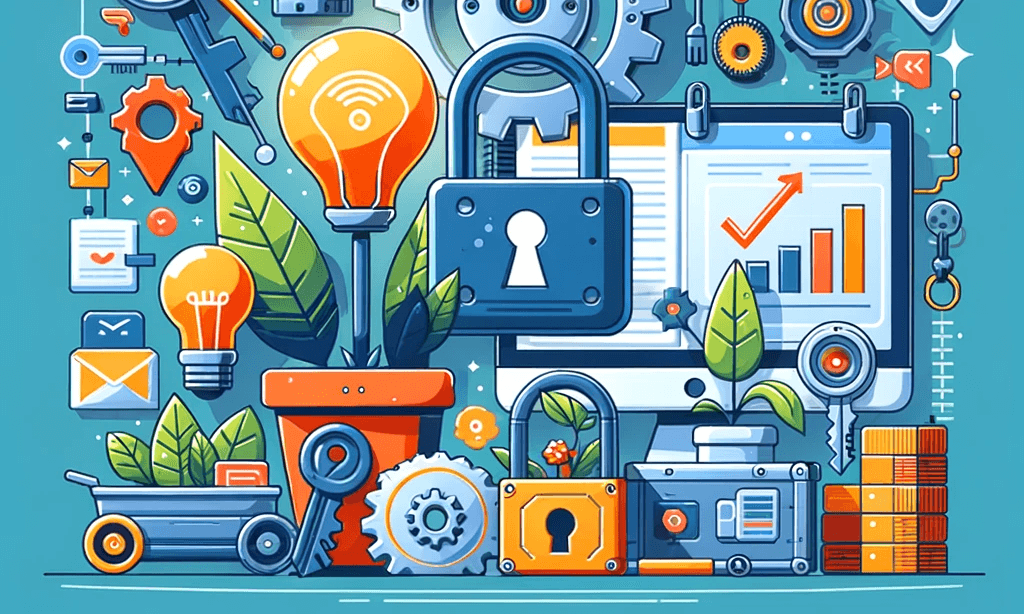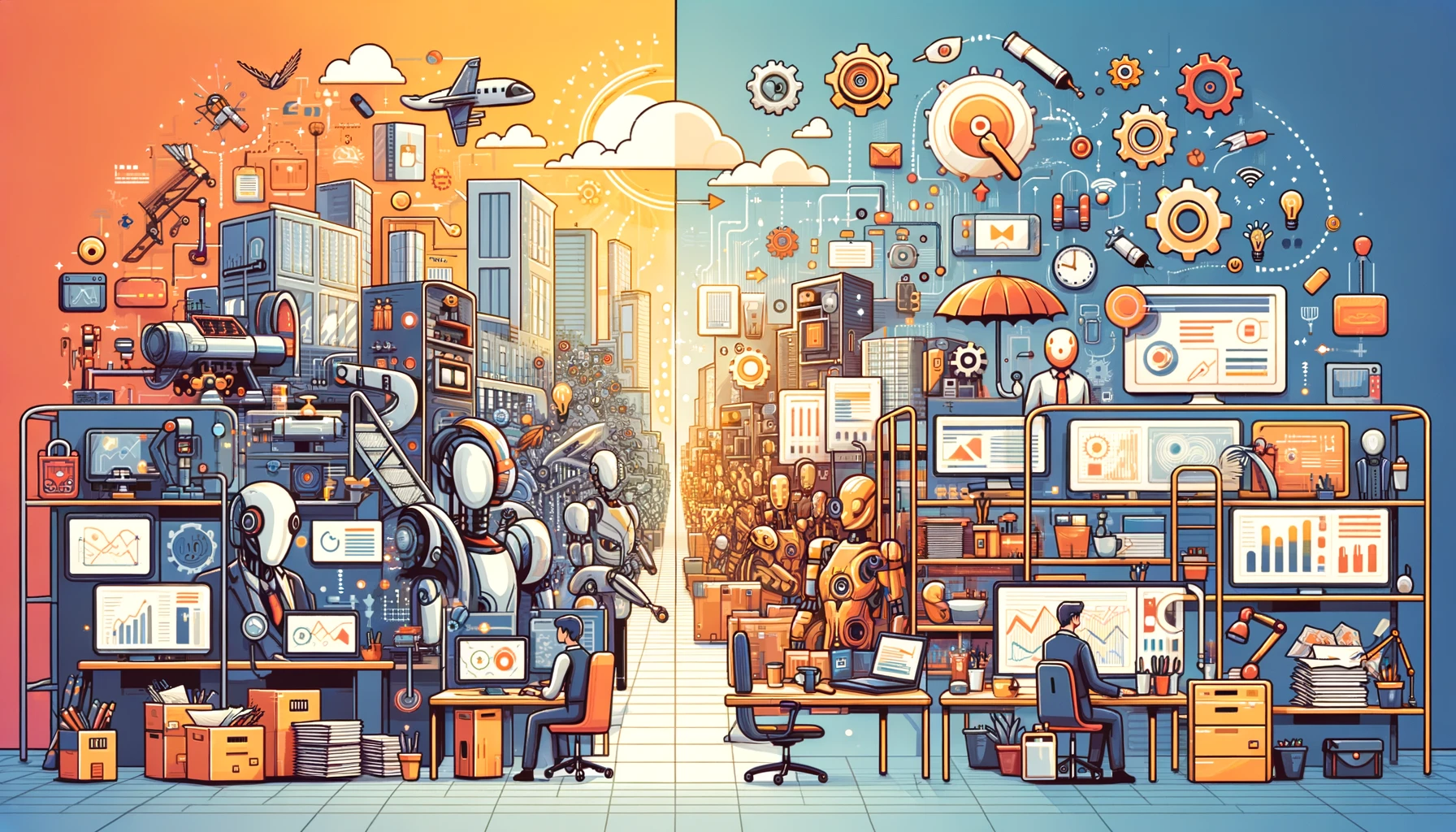
Embracing Digital Transformation
In today’s digital age, the shift from manual methods to automated processes is more evident than ever. It’s a fundamental part of the digital transformation that’s impacting every aspect of personal life and business operations.
Table of Contents
The Shift from Manual to Automated Processes
The transition from manual to automated processes is a significant pillar of digital transformation. This transformation is driven by the need for efficiency, accuracy, and the ability to scale operations. Traditional manual methods, while effective in their time, are often time-consuming and prone to errors. On the contrary, automation enables tasks to be completed faster and with fewer errors, leading to increased productivity and efficiency.
For example, consider the process of scheduling a meeting. In the past, this task would involve back-and-forth emails to find a suitable time for all participants. Now, thanks to digital automation tools, this process can be automated, saving time and minimizing potential scheduling conflicts.
Here’s a simple comparison of manual vs automated processes:
| Process | Manual | Automated |
|---|---|---|
| Scheduling a Meeting | Back-and-forth emails, Potential for scheduling conflicts | Use of digital automation tools, Minimized conflicts |
| Data Entry | Time-consuming, Prone to errors | Quick, Accurate, Scalable |
The Role of Technology in Automation
Technology plays a pivotal role in automation. Through the use of advanced software and hardware systems, tasks that previously required human intervention can now be automated. Digital automations leverage technology to streamline processes, reduce manual labor, and increase productivity.
One of the most significant advancements in this field is the development of artificial intelligence (AI). AI and machine learning algorithms can analyze vast amounts of data, learn from it, and make predictions or decisions based on that information. This has opened up new possibilities for automation, from simple tasks like sorting emails to complex ones like predicting consumer behavior.
Moreover, technology-driven automation strategies are not limited to business environments. They also have significant applications in personal life, helping individuals manage their daily tasks more effectively. For instance, AI-powered virtual assistants can help manage schedules, set reminders, and even control smart home devices.
In short, the shift from manual to automated processes, powered by technological advancements, is a key aspect of digital transformation. It’s a change that offers numerous benefits, from increased efficiency and productivity to improved accuracy and scalability. By embracing technology-driven automation strategies, individuals and businesses can reap these benefits and stay competitive in the digital age.

Understanding Technology-Driven Automation
Diving into the realm of digital transformations, it’s crucial to grasp the concept and impact of technology-driven automation. This section provides an overview of what technology-driven automation is and how it influences productivity.
What is Technology-Driven Automation?
Technology-driven automation refers to the use of advanced technologies, including artificial intelligence (AI), machine learning, and robotics, to automate routine tasks and processes. This type of automation is designed to streamline operations, improve efficiency, and eliminate the potential for human error.
The aim of these automation strategies is to relieve individuals and businesses from the burden of repetitive tasks, freeing up time and resources for more strategic and creative endeavors. These strategies can be applied in various areas, from personal life management to complex business operations.
The rise of digital automation tools has further expanded the possibilities for technology-driven automation, bringing about a new era of efficiency and productivity.
The Impact of Technology-Driven Automation on Productivity
The adoption of technology-driven automation strategies has a profound impact on productivity levels. By automating routine tasks, individuals and businesses can drastically reduce the amount of time and effort spent on these activities, resulting in higher productivity.
For businesses, technology-driven automation can lead to significant cost savings. Automated processes are typically faster and more accurate than manual ones, reducing the risk of costly errors and rework.
Here’s a simple illustrative table indicating how automation can increase productivity:
| Task | Time Taken Manually | Time Taken with Automation |
|---|---|---|
| Data Entry | 3 hours | 30 minutes |
| Report Generation | 5 hours | 1 hour |
| Email Response | 2 hours | 30 minutes |
Moreover, automation allows employees to focus on more strategic tasks, leading to a higher value output. In a personal context, automation can free up time for leisure, personal growth, or other pursuits.
Technology-driven automation also supports a more flexible work environment. Automated systems can operate around the clock, allowing for increased productivity outside traditional working hours.
In conclusion, technology-driven automation strategies provide a powerful tool for enhancing productivity, both in personal life and in a business context. As technology continues to evolve, it’s likely that the impact of automation on productivity will become even more significant. To further explore how AI can boost productivity, check out our article on AI-powered productivity solutions.
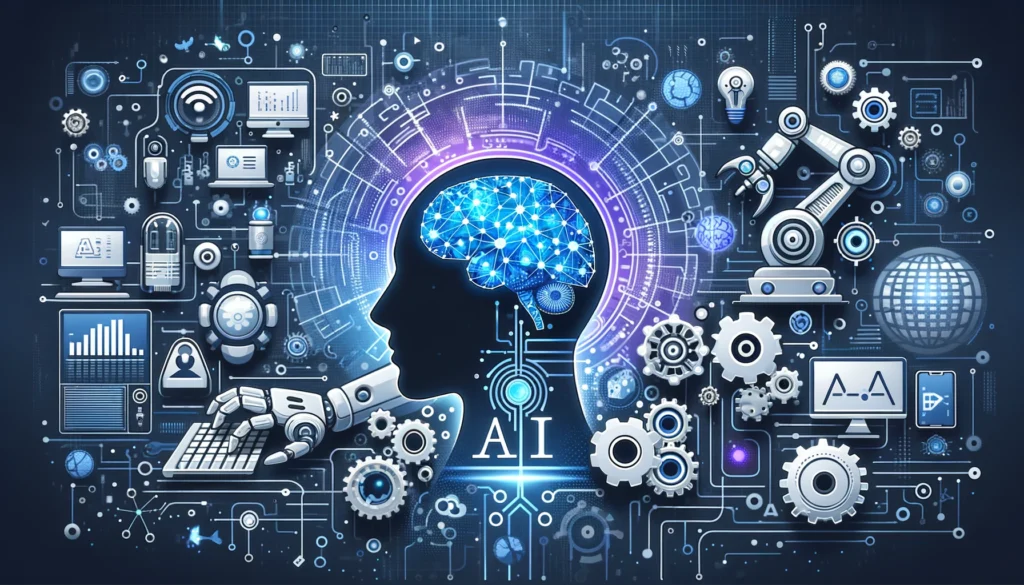
Types of Technology-Driven Automation Strategies
There are several technology-driven automation strategies that individuals and businesses can leverage to enhance their productivity. These strategies make use of advanced technologies, including artificial intelligence and machine learning, robotic process automation, and the Internet of Things. Each approach offers unique capabilities and advantages, making them suitable for different types of tasks and workflows.
Artificial Intelligence and Machine Learning
Artificial Intelligence (AI) and Machine Learning (ML) are powerful technologies that are at the forefront of many modern automation strategies. AI involves the development of systems capable of performing tasks that normally require human intelligence, such as understanding natural language, recognizing patterns, and making decisions. ML, a subset of AI, involves training these systems to learn and improve from experience.
AI and ML can automate complex tasks that are beyond the capabilities of traditional automation tools. They can analyze large amounts of data, identify patterns and trends, and make predictions or decisions based on this information. This makes AI and ML particularly useful for tasks involving data analysis, customer service, and decision making. For a closer look at how AI and ML can enhance productivity, check out our article on ai-powered productivity solutions.
Robotic Process Automation
Robotic Process Automation (RPA) is another key technology for automation. RPA involves the use of software robots or “bots” to automate repetitive tasks. These bots can interact with digital systems and software just like a human user, following predefined rules and procedures.
RPA can automate routine tasks such as data entry, file transfers, and report generation. By taking over these mundane tasks, RPA frees up time for individuals and teams to focus on more valuable, creative, and strategic tasks. For more information on RPA and how it can be used to enhance productivity, refer to our article on digital automation tools.
Internet of Things
The Internet of Things (IoT) is a technology that involves the interconnection of devices, machines, and objects via the internet. These connected devices can communicate and exchange data, enabling them to work together to perform tasks and make decisions.
IoT can automate tasks involving physical devices, such as sensors, appliances, and machinery. This makes IoT particularly useful for tasks involving environmental monitoring, equipment maintenance, and supply chain management. IoT can also enhance personal productivity by automating everyday tasks, such as home security and energy management. For more insights on how IoT can be leveraged for automation, visit our article on digital automations.
In conclusion, AI and ML, RPA, and IoT are key technologies for implementing technology-driven automation strategies. By understanding these technologies and their capabilities, individuals and businesses can choose the right strategies to enhance their productivity and efficiency. The adoption of these automation strategies can lead to significant improvements in both personal and business operations, as discussed in our article on automation in business operations.

Adopting Technology-Driven Automation Strategies
The adoption of technology-driven automation strategies is a critical step towards enhanced personal and business productivity. It involves careful planning, strategy formulation, and overcoming potential challenges.
Considerations for Implementing Automation
When implementing automation, several factors come into play. These considerations ensure that the transition is smooth, and the impact on productivity is maximized.
- Understanding Your Needs: Before initiating automation, it’s crucial to clearly identify the tasks that require automation. These tasks typically involve repetitive, time-consuming activities that can be easily automated to free up time for more value-adding tasks.
- Choosing the Right Tools: Once the tasks have been identified, the next step is to choose the right digital automation tools that align with your specific needs. These tools should be user-friendly, adaptable, and capable of integrating with existing systems.
- Training and Skill Development: Implementing automation often requires a certain level of skill and understanding. Therefore, adequate training should be provided to the individuals who will be interacting with the automated systems.
- Continuous Evaluation: After the implementation, it’s important to continuously evaluate the effectiveness of the automation strategy. This involves tracking metrics like time saved, increased productivity, and overall performance.
Overcoming Challenges of Transitioning to Automation
Transitioning to automation can come with its own set of challenges. However, with the right approach, these obstacles can be effectively managed.
- Resistance to Change: One common challenge is resistance to change, especially in a business setting. This can be mitigated by communicating the benefits of automation, providing adequate training, and gradually implementing changes.
- Technical Difficulties: Technical challenges can arise during the implementation phase. Having a knowledgeable IT team in place can help resolve these issues promptly and ensure smooth operation of the automated systems.
- Data Security: Automation often involves handling sensitive data. Robust security measures should be put in place to protect this data and maintain trust among the users.
- Costs: While automation can lead to long-term savings, the initial implementation can be costly. Developing a clear budget and focusing on high-return automation tasks can help manage these costs.
Adopting technology-driven automation strategies can lead to significant productivity gains, both personally and in business operations. By considering the factors discussed above and proactively managing potential challenges, one can effectively leverage digital automations and AI-powered solutions to enhance productivity.
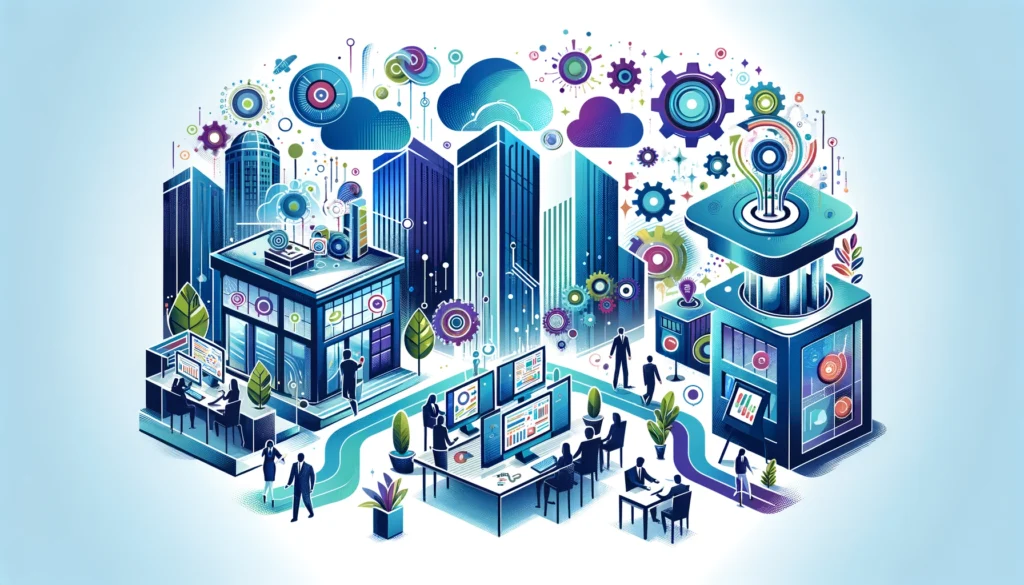
Real-World Applications of Technology-Driven Automation
Technology-driven automation strategies are not only reshaping industries but are also transforming our personal lives. From simplifying daily tasks to increasing productivity, automation is becoming a staple in both our work and personal lives.
Automation in Personal Life
In our personal lives, automation is primarily used to streamline routine tasks. It provides the advantage of enhanced efficiency, saving time and effort that can be allocated to more important or enjoyable activities.
For example, home automation systems regulate lighting, heating, and security systems based on predefined rules or schedules. Similarly, personal finance apps automate budget tracking and bill payments, reducing the time and effort required to manage personal finances.
Automated alerts and reminders are another simple yet effective application of automation in personal life. They ensure important dates, tasks, or deadlines are not missed.
Technology-driven automation strategies have made it possible to automate a wide range of tasks, contributing to an overall improvement in the quality of life. If you’re interested in exploring more digital automation tools, visit our article on digital automation tools.
Automation in Business Operations
In the business world, automation is used to streamline operations, improve productivity, and reduce costs. It’s often implemented in areas where repetitive or time-consuming tasks can be performed by technology, freeing up employees to focus on more complex or creative tasks.
For instance, in customer service, chatbots and AI-powered assistants automate the process of answering common customer inquiries, reducing the workload of customer service representatives.
In marketing, automation tools schedule and post social media content, track and analyze customer behavior, and even automate email campaigns. These tools not only save time but also enable more targeted and effective marketing strategies.
Moreover, businesses leverage Robotic Process Automation (RPA) to automate routine tasks like data entry, invoice processing, and report generation. RPA not only speeds up these processes but also reduces the risk of errors.
The real-world applications of technology-driven automation strategies in business operations are vast and continually growing. For a deeper dive into automation in business operations, check out our article on automation in business operations.
The adoption of automation, both in personal life and business operations, is a testament to the significant benefits it offers. With the continuous advancement in technology, the scope and impact of automation are only set to increase, making it an exciting area to watch. Stay ahead of the curve by exploring more about digital automations and ai-powered productivity solutions.
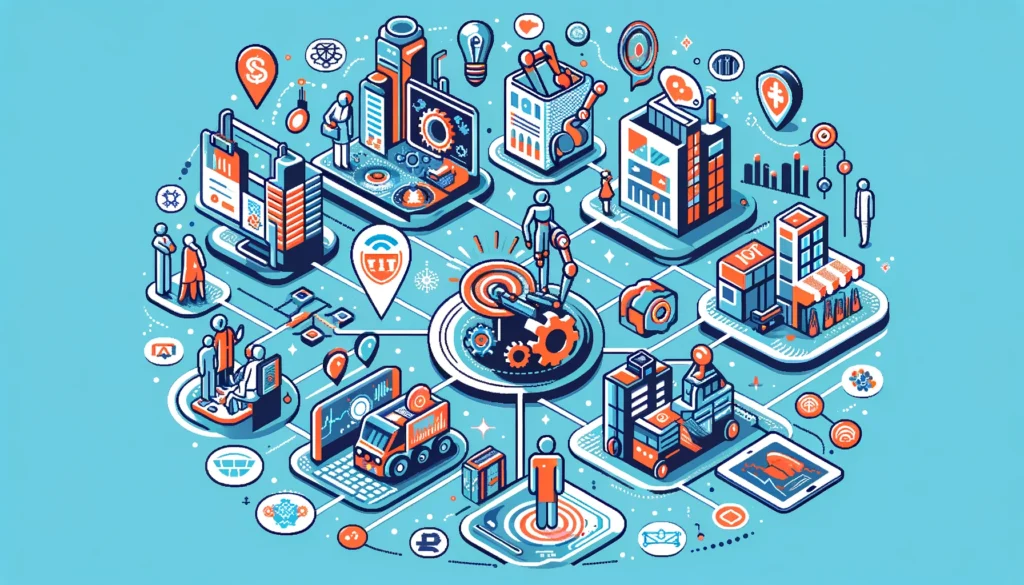
Future of Technology-Driven Automation
As we continue to progress into the digital age, the future of technology-driven automation strategies appears promising. The emergence of new trends and the potential impact of automation on the future of work are topics of interest for both individuals and businesses alike.
Emerging Trends in Automation
In the realm of automation, there are several emerging trends that are shaping the future landscape. These include the integration of artificial intelligence (AI) and machine learning, the rise of predictive analytics, and the use of advanced robotics.
AI and machine learning continue to advance, creating sophisticated automation solutions that can learn, adapt, and improve over time. These technologies are being integrated into various digital automation tools, enhancing their capabilities and making them more efficient and effective.
Predictive analytics, powered by AI and machine learning, is another rising trend. This technology helps anticipate future outcomes based on historical data, allowing for proactive decision-making and strategic planning.
In the field of robotics, advanced robots equipped with AI are being used to automate complex tasks that were once performed manually. These robots are capable of working alongside humans, enhancing productivity and efficiency.
| Trend | Description |
|---|---|
| AI and Machine Learning | Improved learning, adaptation, and problem-solving capabilities in automation tools |
| Predictive Analytics | Anticipating future outcomes for proactive decision-making |
| Advanced Robotics | Use of AI-equipped robots for complex task automation |
The Role of Automation in Shaping the Future of Work
Automation is not only changing the way we perform tasks, but also shaping the future of work. As technology-driven automation strategies continue to evolve, they are expected to create new opportunities, redefine job roles, and transform the workplace.
Automation is enabling businesses to streamline their operations, reduce costs, and increase productivity. By automating repetitive and mundane tasks, employees can focus on more complex and creative aspects of their work. This not only enhances job satisfaction, but also leads to higher value output.
The adoption of automation in business operations is also leading to the emergence of new job roles. As automation tools become more complex, there is a growing need for professionals who can manage, maintain, and optimize these systems.
Furthermore, automation is expected to transform the workplace by promoting remote work and flexible working hours. With automation tools capable of performing tasks 24/7, employees are no longer bound by traditional 9-5 working hours.
The future of technology-driven automation is an exciting prospect. As we continue to explore and implement these strategies, we can look forward to a future of increased productivity and efficiency, both in our personal lives and in the workplace. For more insights into the world of automation, explore our articles on digital automations and ai-powered productivity solutions.


